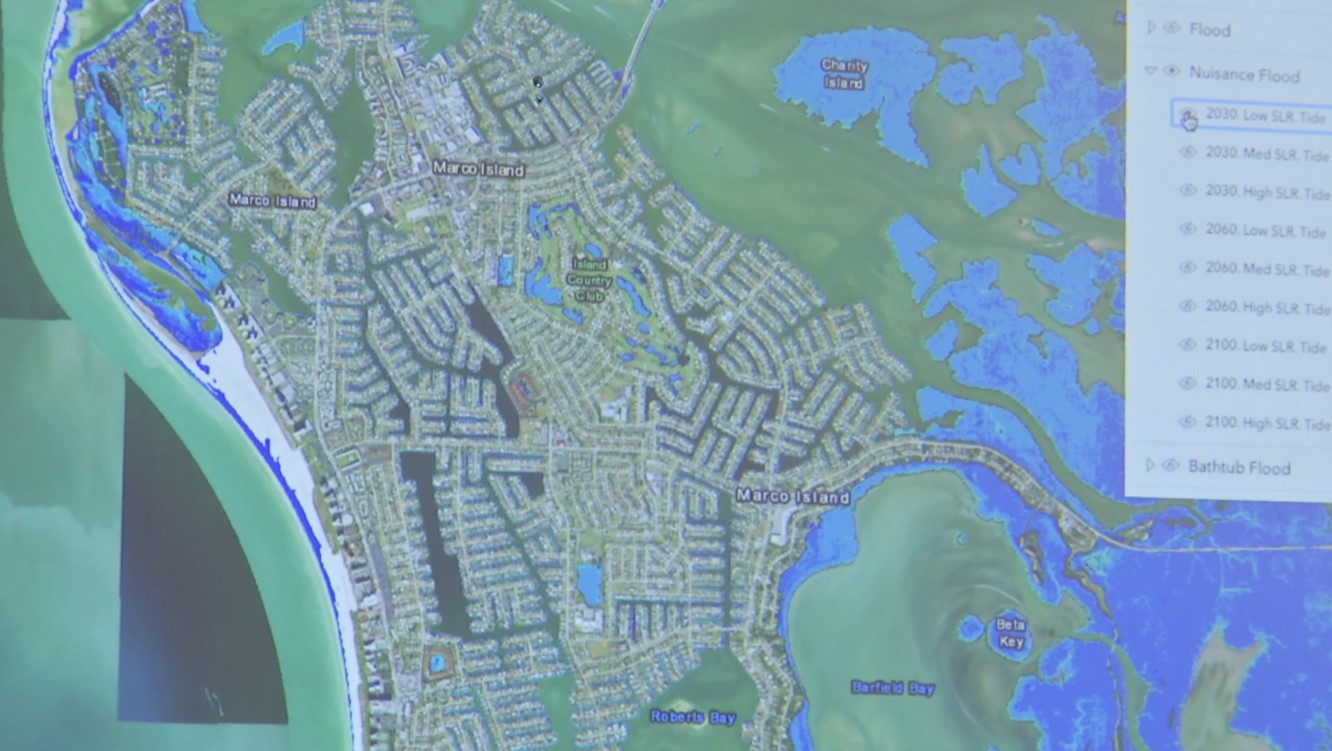
WINK NEWS
We may not have a crystal ball to predict the future, but researchers hope a new tool will give us a better idea of how one of our most populated counties will fare in the face of storms and sea level rise.
There’s nothing quite like sitting alongside the beautiful Gulf on a sunny day in Collier County, but we don’t want that water moving further inland.
It’s a real concern for Hyla Crane, executive director of the Marco Island Center for the Arts.
“Marco Island Center for the Arts is just a stone’s throw away from the water,” she said, and that makes sea-level rise and storminess a real concern.
With those issues top of mind, Michael Savarese, Ph.D., a professor at The Water School at Florida Gulf Coast University, worked with University of Florida’s Peter Sheng, Ph.D., to create a tool to see how sea level rise and climate change will impact the county.
“The tools simulate what the landscape looks like in 2030, 2060, and 2100 at a number of different sea level rise magnitudes. We’re using established sea level rise curves to pick a series of sea level rise magnitudes and simulates then how the landscape is flooded with respect to tides,” Savarese said.
You can select different “assets” to see if flooding would reach hospitals, police stations, and bridges.
Along with education, Sally Woliver, a member of The League of Women Voters, feels this tool could turn the tide on protecting our coastal communities.
“There’s time as Collier County as a community can look out and say, what do we need to do to get involved? Where do we need to be spending funds? Where should we be redirecting growth?”
The tool is already in use professionally and the plan is to host public workshops on how the tool works and can help people. The hope is to have a user’s manual ready by summer or early fall.
The push for coastal resiliency doesn’t stop there. The City of Naples, Naples Botanical Garden and “EarthBalance” were replanting dunes at different beach accesses in Collier County on Wednesday.
Crews also removed invasive plants. More biodiverse plants help provide habitat for animals like birds, turtles and insects.
Sand dunes are vital to our coast as they protect against storm surge and flooding.
“They’re really our first line of defense against storms, so they hold sand in place. If we get a tropical storm or a hurricane, they help hold the beach in place. We don’t lose all the sand; we don’t lose all of our beaches,” said Chad Washburn, vice president of conservation at the Naples Botanical Garden.
This project is also good for the wallet because the plants are low maintenance and still look great for beachgoers.
The Link LonkApril 29, 2021 at 04:30AM
https://ift.tt/3u0MbUM
Tool helps prepare for sea level rise, coastal flooding in Collier County - Wink News
https://ift.tt/2CoSmg4
Sea
/cloudfront-us-east-2.images.arcpublishing.com/reuters/CZF6NULMVVMEXHOP7JK5BSPQUM.jpg)
No comments:
Post a Comment